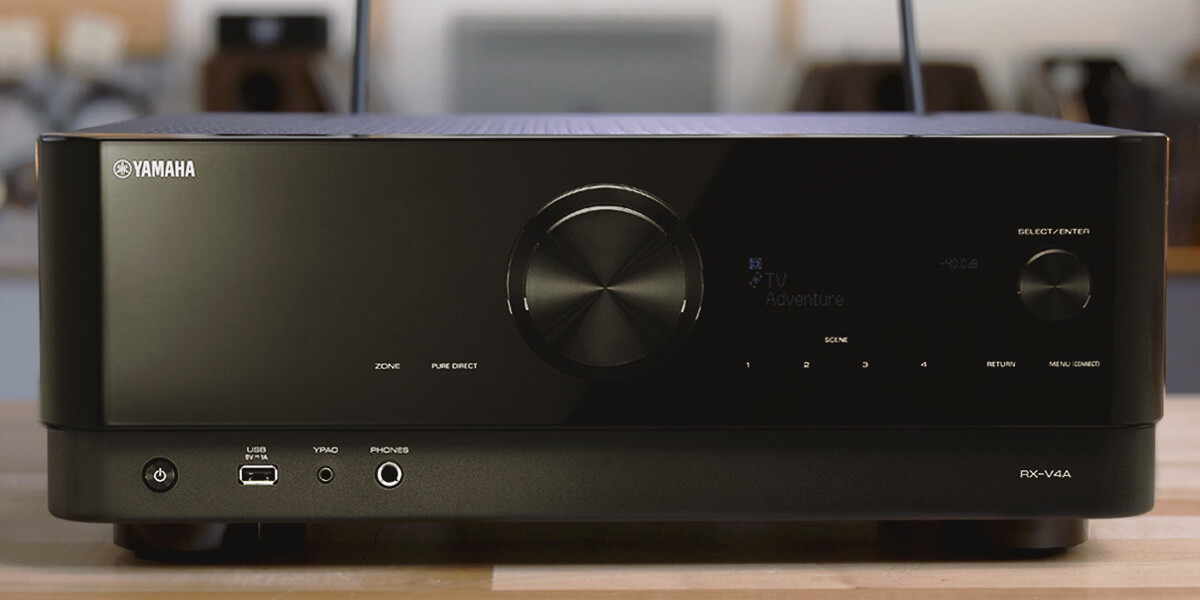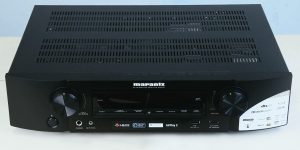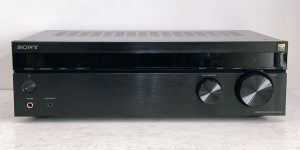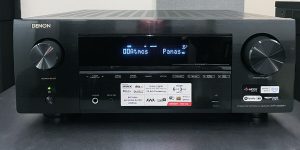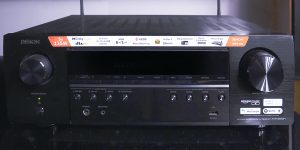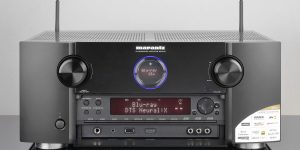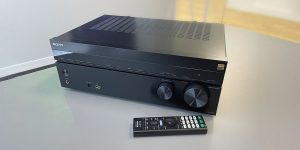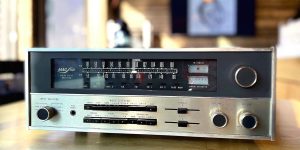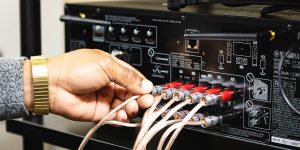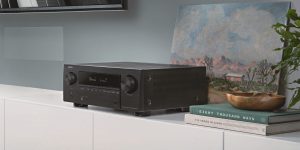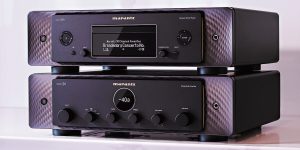Apparently, you are already a happy home theater owner looking for options to upgrade your system. In that case, reviewing the best 5-channel receivers is a great way to understand what a 5.1 amplifier system can offer you.
Here we’ll discuss what knowledge will make your choice easier, get to know the 5 great models, and at the end, I’ll answer the most common questions associated with such systems.
So, it’s my pleasure to invite you on a fascinating journey that will give you an unforgettable home theater experience. Of course, after you choose one of the presented AVRs.
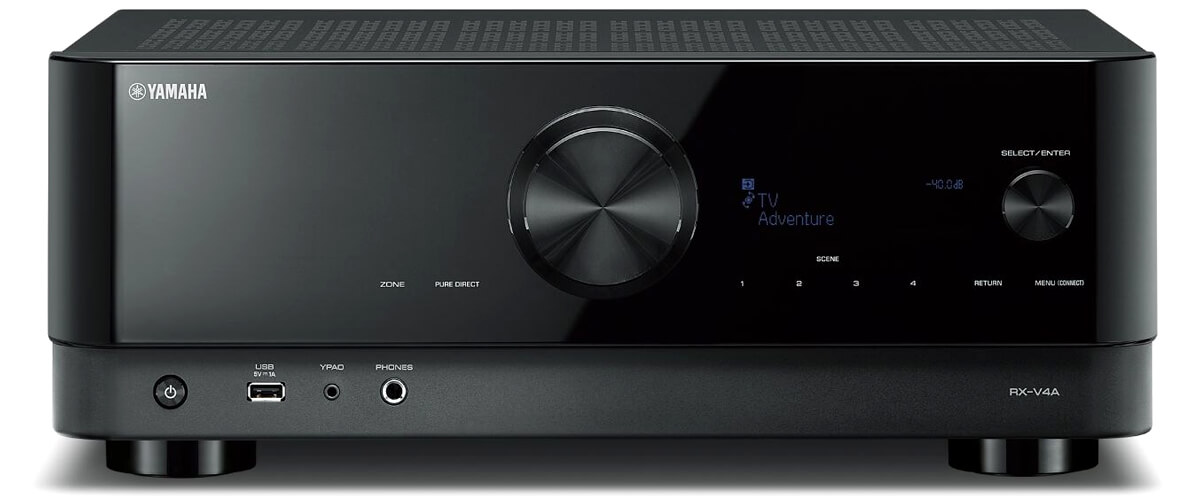
5-channel AV receivers comparison table
| Name | Channels | Power output | HDMI in/out | Bluetooth/Wi-Fi | Review |
|---|---|---|---|---|---|
| Yamaha RX-V4A best overall | 5.2 | 80W/6 Ohm | 4/1 | yes/yes | Review |
| Denon AVR-S570BT also great | 5.2 | 70W/8 Ohm, 90W/6 Ohm | 4/1 | yes/no | Review |
| Sony STRDH590 budget | 5.2 | 145W/6 Ohm | 4/1 | yes/no | Review |
What should you pay attention to when choosing a 5-channel receiver?
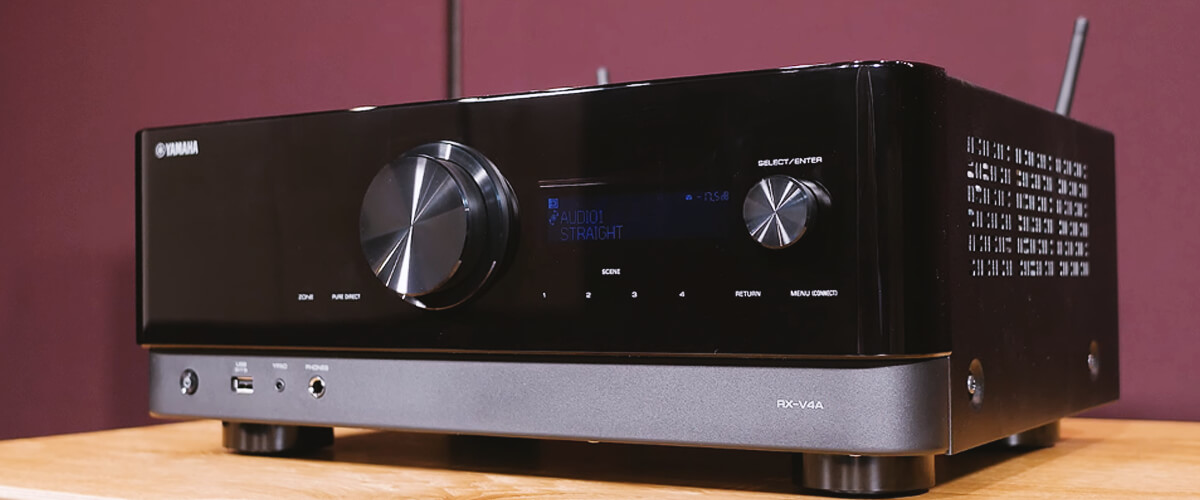
To find the best 5.1 surround sound receiver, you should definitely pay attention to some factors. It will literally simplify your understanding of the system and make it easier to choose before buying.
This configuration is the easiest for surround sound in your home. It will suit beginners or just unassuming users, especially if you have a limited budget. But that does not mean it should not be taken seriously. Considering the following key points when choosing a home theater receiver, you’ll get an audio-video system that will last you for years without upgrading.
Power rating
Of course, this figure is not decisive. Since we are talking about the simplest surround sound configuration, you should expect that it is designed for small rooms (up to 300 ft2). So when you see in the specs that the Power rating per channel averages 50-80W, this figure will be quite satisfactory for this kind of amplifier and room. But the main reason why you should definitely consider the power rating is the compatibility with the speakers (they must be in the same range, as well as the frequency).
Connectivity options
One of the fundamental factors in the choice will be the connectivity of your future receiver. HDMI ins/outs are the most important (since that is where most of today’s technology connects to). But here, whether they support eARC and HDCP formats is also important because this will improve the quality of content transmission. Wireless connection is also very important in today’s world. Not all receivers in this class have Bluetooth and Wi-Fi in their arsenal, but something of one is usually available. Keep an eye out.
Less important in general, but special to you, maybe phono in, which is needed for vinyl lovers, and digital audio in, component video in, etc., which you’ll need if you like to collect old equipment.
Video compatibility
If you are going to use your home theater frequently and for a long time, you should remember that time is of the essence. More and more content is appearing on external media or video services in high-quality 8K video. Of course, you must also have a TV that supports this kind of video. In receivers of this category, support of such quality is rather uncommon. Usually, you should expect 4K video support and some HDR formats (HDR10, Dolby Vision, HLG). But in this case, I recommend choosing 4K/120Hz rather than 4K/60Hz. Also, often in 5-channel receivers, there is no upscaling function, which improves the quality of video from the source by displaying a clearer picture. So if it is there, it is a bonus.
Surround sound formats
5-channel receivers are not designed to support modern surround sound formats such as Dolby Atmos and DTS:X. Of course, that doesn’t limit their options. But they do a great job with earlier and more common formats. And some models simulate 3D surround sound with virtualization or neuroimaging technologies. In my review, the Onkyo TX-SR393 has such technology.
Best 5.1 receiver reviews
Yamaha RX-V4A – best overall

The first and best 5.1 receiver by a combination of all parameters, including price/quality, on my list, is the 2020 Yamaha RX-V4A. If we follow the key factors we reviewed above, we can start with the fact that this model delivers 80 watts (6 ohms, 20Hz-20kHz, 0.09% THD, 2 ch), which is a great value for filling a medium-sized room.
Next, you should pay attention to the HDMI inputs and outputs, of which the receiver has 4/1. That’s not a lot, but it’s pretty standard for a 5-channel receiver, especially since there is CEC and eARC support. More importantly, here, you can watch 8K/60Hz and 4K/120Hz video in HDR10, Dolby Vision, and HLG formats, which are great options that even more expensive models don’t have. For example, the Marantz NR1510 doesn’t have 8K video support. But it’s worth mentioning that I noticed some interruptions while streaming 4K video (120Hz), but this is due to a common HDMI 2.1 problem. The RX-V4A even has an upscaling feature to 4K.
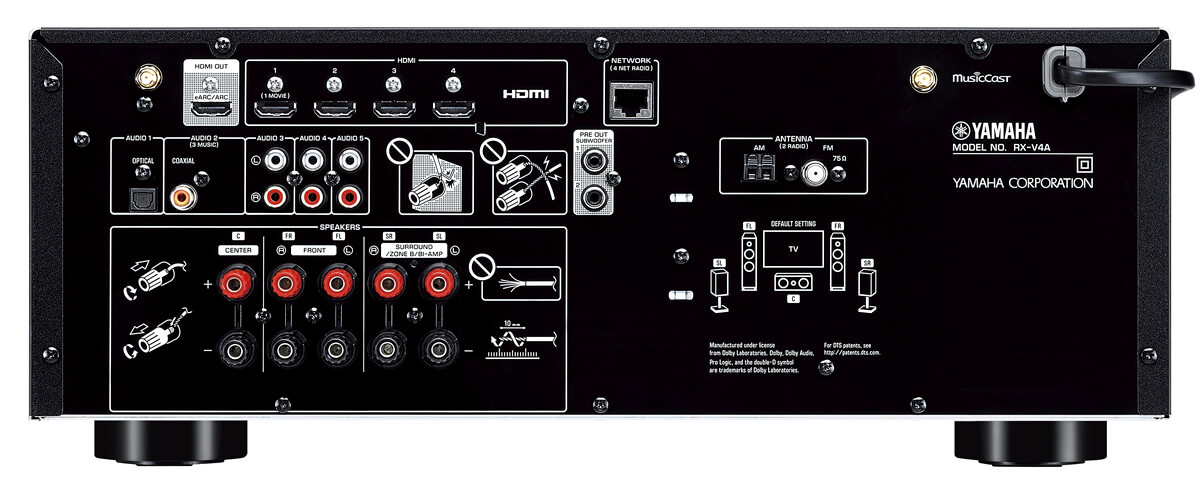
As for surround sound, the receiver supports old Dolby TrueHD and DTS-HD Master Audio surround formats as standard, but the latest or their virtual versions do not. But of the advantages, it is worth pointing out the Cinema DSP 3D technology, which provides theatrical sound.
Music fans will be pleased to know that Yamaha RX-V4A has a phono input for a turntable. And as for digital formats, Yamaha’s built-in Compressed Music Enhancer system brings MP3 files to a level close to High-Resolution Audio.
This AVR also has both wireless connectivity options (Wi-Fi and Bluetooth), which is rare. Which means you have streaming services available to you. The Yamaha MusicCast performs the function of multi-room broadcasting since there is no zoning. The RX-V4A also works with AirPlay 2, Google Assistant voice assistants, and Amazon Alexa.
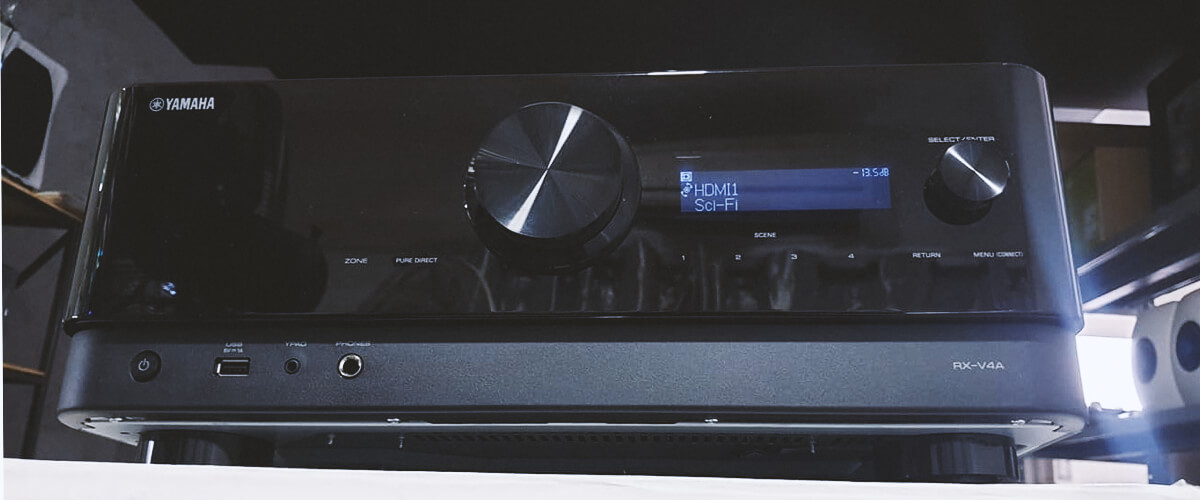
It’s fair to start describing my listening experience, specifically with music. I did not have enough bass, but this is common with Yamaha, as the brand has a cooler sound than others. But there is a feeling of more purity in the overall picture. And! There is an additional output for a second subwoofer (but since I picked up all the receivers with this option, I won’t repeat myself occasionally). So, the RX-V4A has a great stereo, for which I have no complaints. And I spent a long time testing the receiver with all its features. Also, while watching I Am Number Four, I noticed no distortion, creaking, or grinding. And there are a lot of complex sound scenes in which an inexpensive receiver can show its negative side. I even intentionally turned up the volume, but the Yamaha didn’t disappoint.
The Yamaha RX-V4A is an optimal choice for people looking for a quality, versatile home system for music and video viewing. It is the clear leader in my rating for most key indicators, including the quality-to-price ratio.
Key specs
- Channels: 5.2.
- Power output: 80W/6 Ohm.
- HDMI inputs/outputs: 4/1.
- Video functions: 8K/60Hz, 4K/120Hz pass-through, upscaling to 4K.
- Bluetooth/Wi-Fi: yes/yes.
- Streaming services: AirPlay 2, Spotify, TuneIn, Deezer, Tidal, Netflix, Amazon Prime.
- Suppots: HDMI ARC, HDMI eARC, HDMI CEC, HDCP2.3, HDR10, HDR10+, Dolby Vision.
- Surround sound: DTS HD Master, Dolby TrueHD, Dolby Digital Plus, Cinema DSP.
Pros
- Expanded capabilities, compared to competitors, to view videos in high-quality formats.
- Cinema DSP 3D technology provides theatrical sound.
- Yamaha Compressed Music Enhancer system brings MP3 files to a level close to High-Resolution Audio.
- Enhanced wireless connectivity compared to others (Wi-Fi, Bluetooth, HEOS).
Cons
- There are no virtual versions of Dolby Atmos or DTS:X.
Denon AVR-S570BT – also great
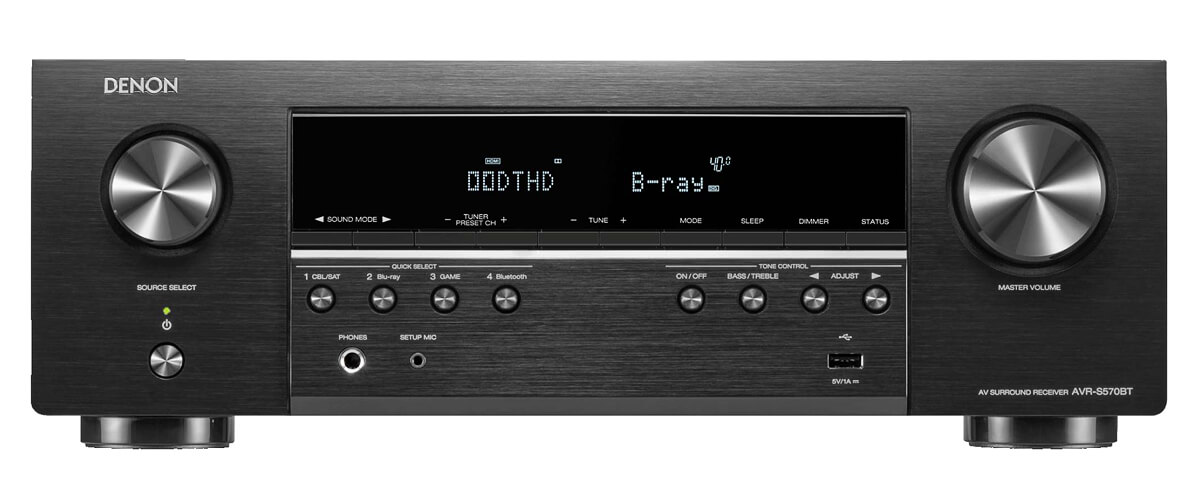
The Denon AVR-S570BT 5-channel receiver isn’t much more expensive than the Yamaha RX-V4A, but it’s worth it. This is the newest model in my chart, introduced to the world in 2022. Since then, it has become quite popular. And we’re about to find out why.
The AVR power isn’t great, but enough in its category. The manufacturer declares 70W (8 Ohm, 20Hz – 20kHz, 0.08%, 2ch). Well, that’s in the range of sufficient values. And its incredibly warm sound is a separate topic.
The receiver has the same number of HDMI connections as the other reviewers (HDCP 2.3 and eARC). There are also ports for connecting old equipment, a USB port, a headphone output, and an output for a second subwoofer. But for vinyl lovers, there is no phono input (unlike Yamaha, for example), which is a disappointment since I adore the warm sound so suited to records. Nevertheless, I connected the turntable via analog inputs with an external preamplifier. But this will cost you more if you don’t have a phono stage.
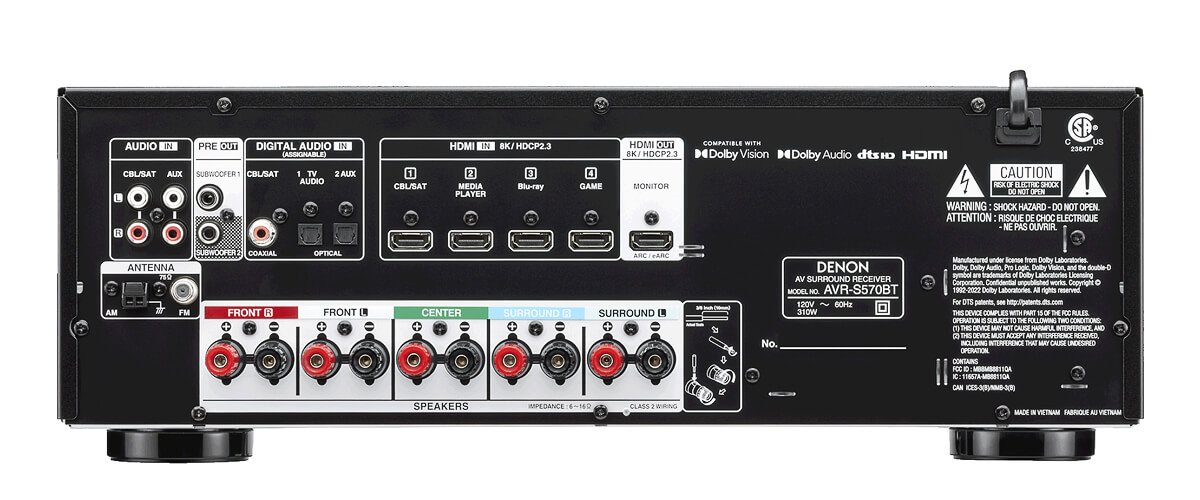
But the AVR-S570BT supports 8K/60Hz video. And there’s even upscaling for that resolution and 3D Signal Pass-through. Another of the receiver’s pluses in terms of video is support for HDR10+ format, which its predecessors do not have. It is very cool for its price.
In terms of sound, everything is also quite simple. Surround sound, as I said, is standard for the receiver category. In terms of music and wireless connectivity, on the other hand, another disappointment is as the Denon AVR-S570BT doesn’t support Hi-Res formats and has no Wi-Fi, so it doesn’t work with voice assistants. There are also no platforms for wireless multi-room broadcasting. However, Spotify, Deezer, Pandora, and others are available via Bluetooth. And, by the way, everything works great, without interruptions.
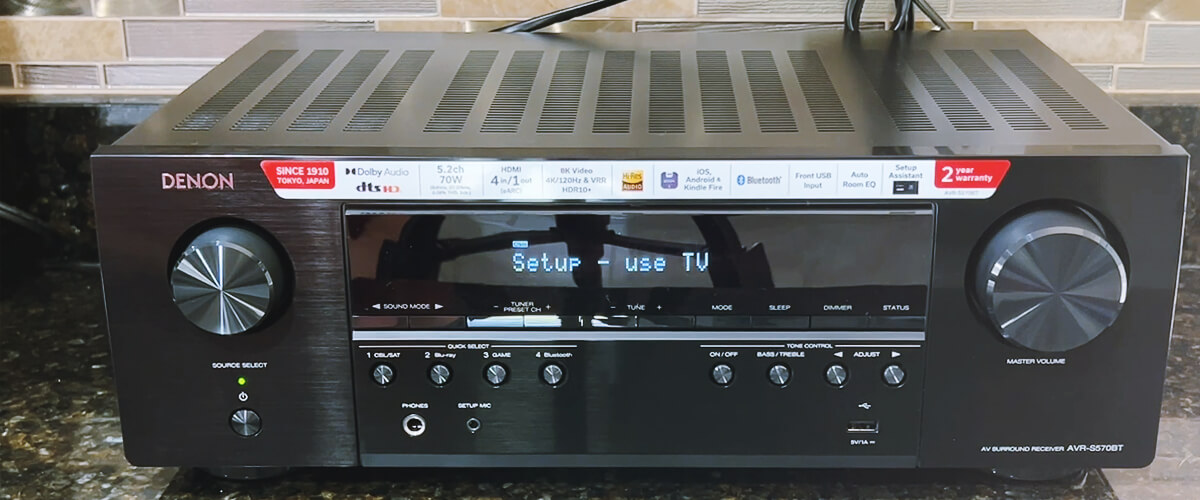
Well, since the manufacturer has focused on high-quality video transmission, the sound does not have to say too much. Nevertheless, as I said, Denon is famous for its unique sound, even with such minimalistic equipment. Watching a few of the movies I chose to test gave me a fairly realistic enveloping experience. The sound moved well behind the picture on the screen and did not cause me any negative emotions.
The Denon AVR-S570BT is quality without question! Its warm sound adds realistic stereo and surround sound, and the bass is awesome compared to the competition. Yes, it may not be “starry-eyed,” but it’s great for those who dream of a quality video for reasonable money in their home.
Key specs
- Channels: 5.2
- Power output: 70W/8 Ohm, 90W/6 Ohm.
- HDMI inputs/outputs: 4/1.
- Video functions: 8K/60Hz, 4K/120Hz pass-through, upscaling to 8K.
- Bluetooth/Wi-Fi: yes/no.
- Streaming services: has not.
- Suppots: HDMI ARC, HDMI eARC, HDMI CEC, HDCP2.3, HDR10, HDR10+, Dolby Vision.
- Surround sound: DTS HD Master.
Pros
- Upscaling function for 8K.
- Supports HDR10+ format.
Cons
- No phono input.
- No Wi-Fi.
- Does not support working with voice assistants.
Sony STRDH590 – budget
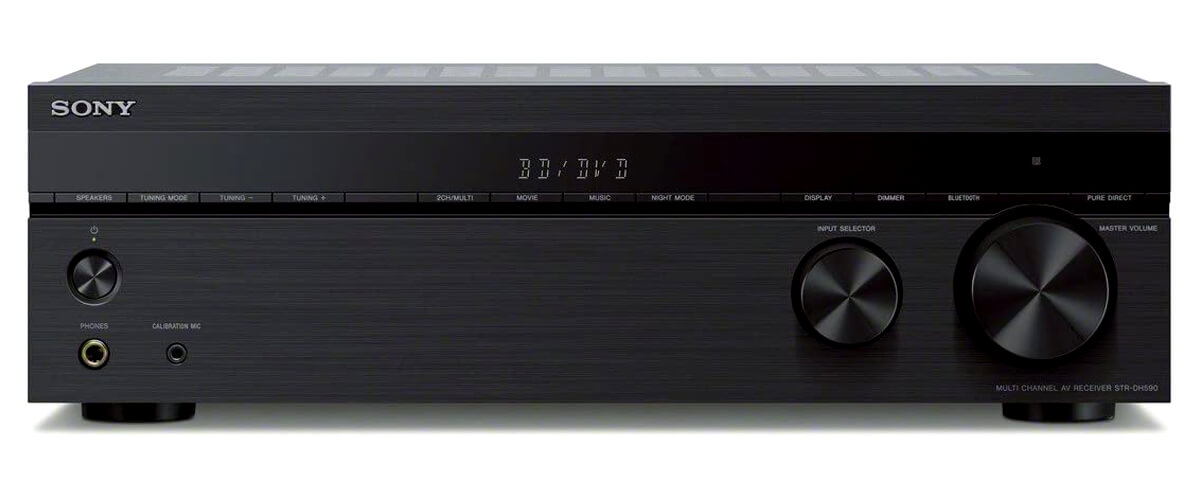
Next, I want to draw your attention to the most inexpensive receiver of my selection, which, nevertheless, has decent qualities. And that’s the 2018 Sony STR-DH590. It’s also the oldest model on my list.
The 5.2 receiver is rated at 90 watts (6 ohms, 20 Hz – 20 kHz, 0.09% THD, 2 ch). But the nice fact is that it is compatible with speakers from 6 to 16 ohms. That said, if you adjust the volume, you can also connect 4-ohm speakers. But I don’t recommend cranking the volume to maximum anyway. This is never a good idea with budget receivers because they have a high distortion figure.
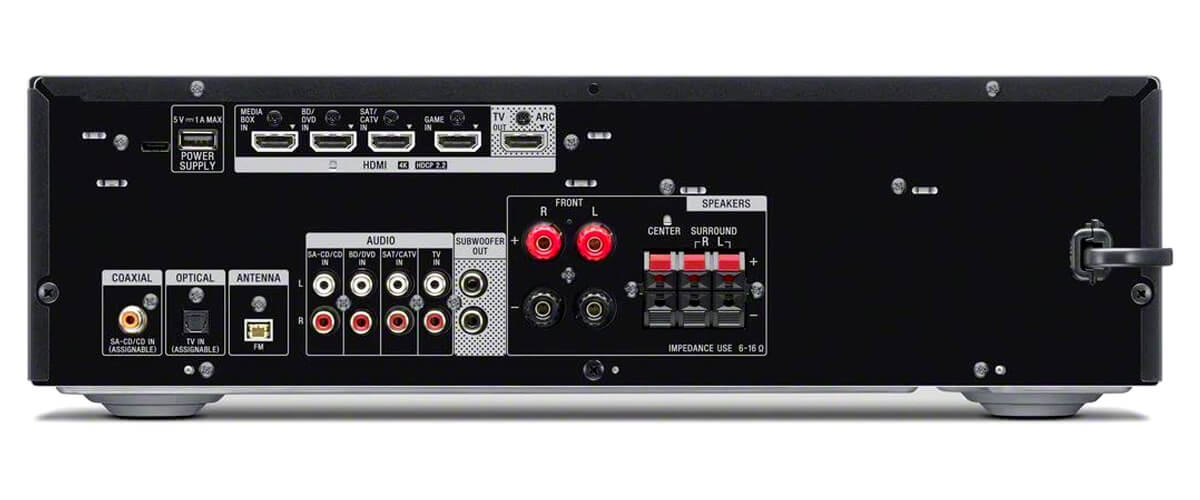
The STR-DH590 also has 4/1 HDMI but version 2.0. Yes, they are simpler than the Yamaha RX-V4A and have HDCP 2.2 and ARC support. Accordingly, the receiver works with a 4K/60Hz 4:4:4 TV and supports HDR10, HLG, Dolby Vision formats, and 3D video. In these specs, it is similar to the Onkyo TX-SR393, which is inexpensive and on my list. These are the most basic features of this kind of equipment – expected and quite satisfactory.
The Sony STR-DH590 supports the older DSD, Dolby Digital, and DTS-HD Master Audio surround formats. And for listening to stereo from streaming services, there is Bluetooth version 4.2, which proved excellent with Spotify and Pandora. I especially enjoyed listening to jazz and blues, as the Sony has a cool but not cold sound like the Yamaha.
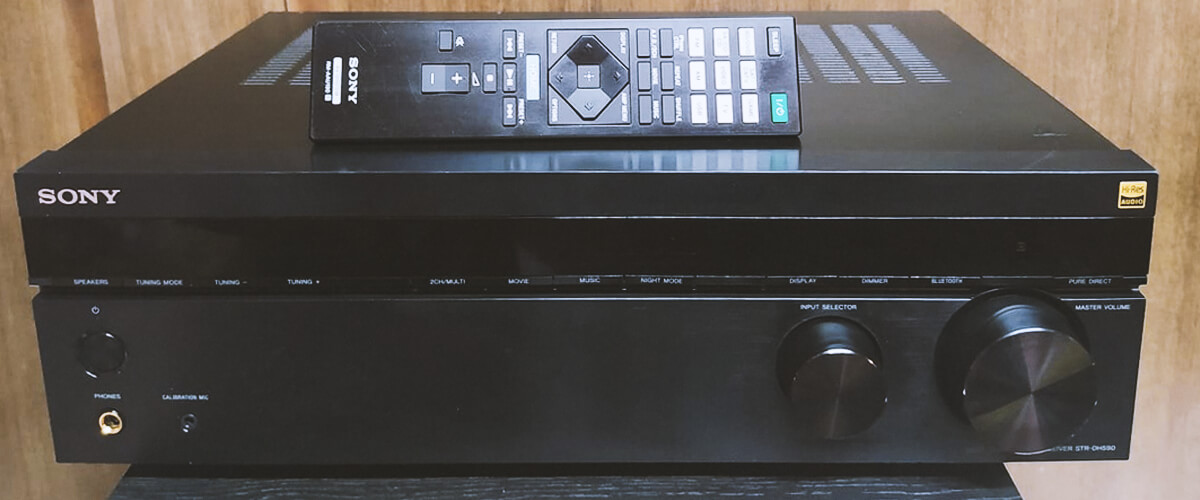
The receiver performed very well with surround sound. I watched Ender’s Game and was pleased with the distribution of the soundtracks in the speakers, as the detail was good. The final battle was rich and with good fat bass. Separately, I would highlight the S-Force PRO feature, which simulates surround sound even if you only have two front speakers. It can save you some extra money if you’re not yet ready to invest in a full home theater system.
Sony has really made the best budget 5.1 receiver of excellent quality. Its rugged construction and basic features are great for people on a small budget, and, at the same time, the sound does not disappoint.
Key specs
- Channels: 5.2
- Power output: 145W/6 Ohm.
- HDMI inputs/outputs: 4/1.
- Video functions: 4K/60Hz pass-through.
- Bluetooth/Wi-Fi: yes/no.
- Streaming services: has not.
- Supports: HDMI ARC, HDCP 2.2, HDR10, Dolby Vision.
- Surround sound: DSD, DTS HD Master, Dolby Digital, Dolby Dual Mono.
Pros
- Works with all kinds of speakers.
- Supports 3D video.
- S-Force PRO feature, which simulates surround sound even if you only have two front speakers.
Cons
- No 4K/120Hz support.
- No Wi-Fi.
Onkyo TX-SR393
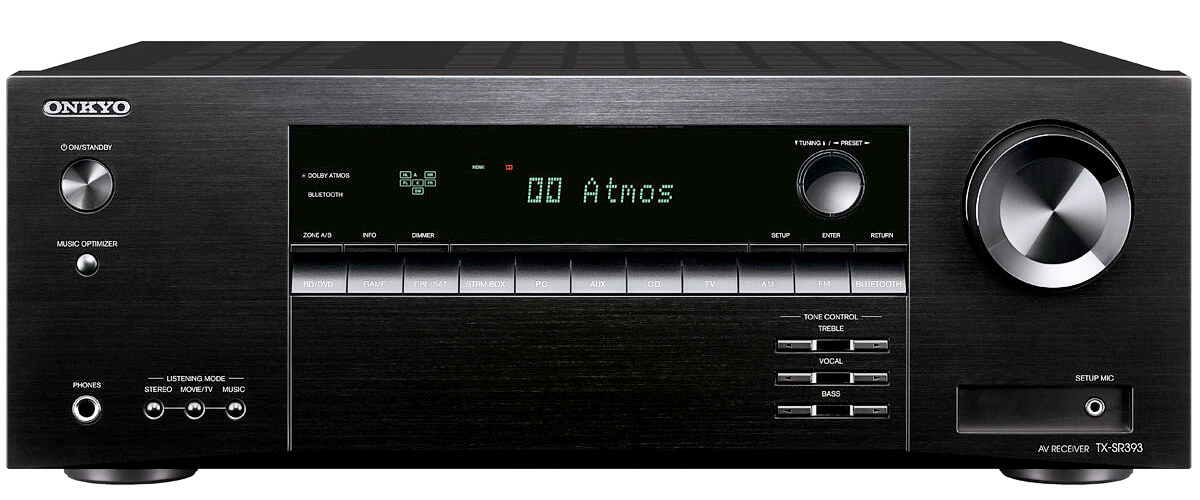
Another excellent 5.1 surround sound receiver at an affordable price is the 2019 Onkyo TX-SR393. It offers 80 watts per channel (8 ohms, 20 Hz – 20 kHz, 0.08% THD, 2 ch). But this is the only model in my ranking that can offer the experience of listening to surround sound in 3D formats, or rather, it simulates them perfectly. Here we have Dolby Surround and DTS Neural:X. They find the overhead cues in older soundtracks, and you get the sense of surround sound like in more advanced systems. You can also use Dolby Atmos Height Virtualizer to play the upper channels. I insist on “imitates,” so don’t expect a full-fledged experience.
The TX-SR393 also has 4 HDMI inputs and 1 HDMI output that support HDCP 2.3, 3D, ARC, and CEC, which means it’s excellent for modern content. Like Sony STR-DH590, Onkyo supports 4K/60Hz video resolution with 4:4:4 color space and HDR10, HLG, and Dolby Vision video formats. But unlike Sony, this receiver has upscaling to 4K. And that’s a plus. But as you can see, unlike the Denon AVR-S570BT, the creators of Onkyo gave preference in favor of surround sound. Well, depending on your wishes, it’s nice to have something to choose from.
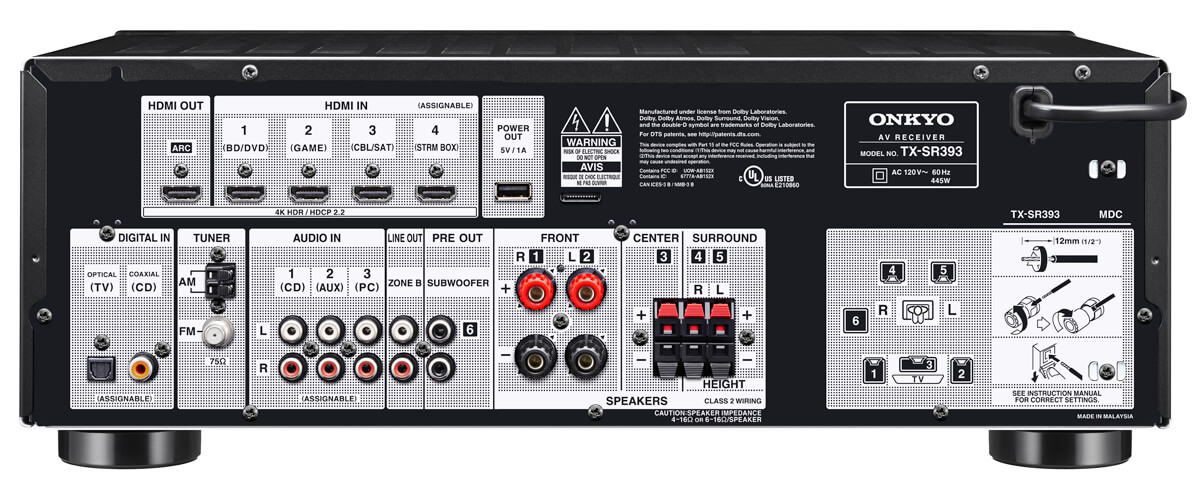
Also, like the Sony, this receiver has no phono input. And that’s a disappointment. But the Onkyo TX-SR393 has both Wi-Fi and Bluetooth, and it generally supports Spotify, Deezer, Tidal, and Hi-Res audio formats. You can also stream audio to 2 Zones. All in all, some more proof that the brand has taken care of the sound more than the video.
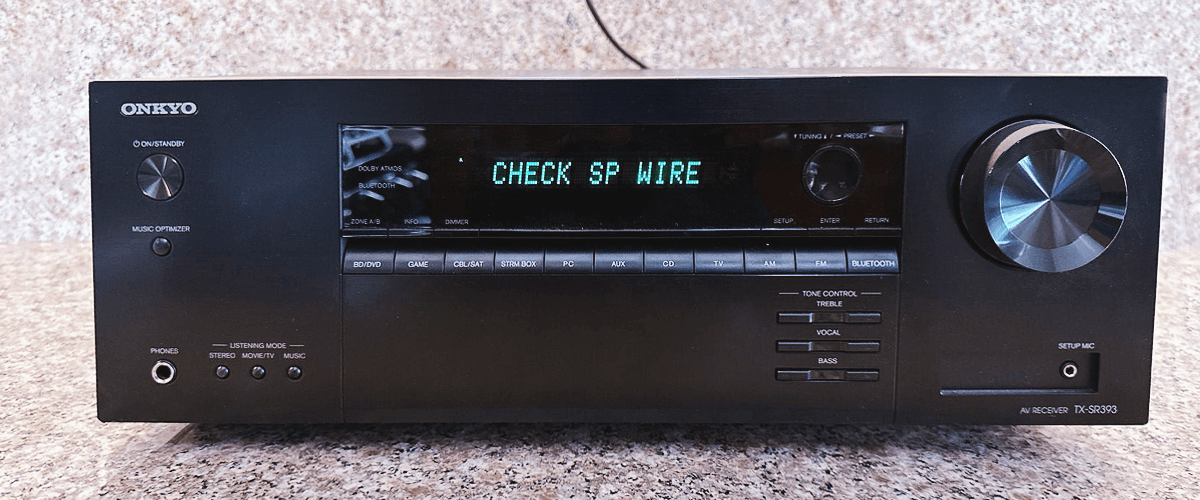
Of course, watching Edge of Tomorrow was strikingly different from all the previous receivers. The virtualization does its job, and the battle scenes sounded pretty realistic, like flying shrapnel after an explosion over my head. And no lag! But I was pretty impressed with the music listening, too. For such an inexpensive device, the digital formats sounded pretty cool. I tried several services, connected my phone via Bluetooth, and everything worked smoothly.
At first glance, the Onkyo TX-SR393 is fairly simple and has the qualities of a mid-range receiver. But it can give you surround sound at the level of more sophisticated systems and is designed for people passionate about music.
Key specs
- Channels: 5.2
- Power output: 80W/8 Ohm.
- HDMI inputs/outputs: 4/1.
- Video functions: 4K/60Hz pass-through.
- Bluetooth/Wi-Fi: yes/no.
- Streaming services: has not.
- Suppots: HDMI ARC, HDMI CEC, HDCP2.3, HDR10, Dolby Vision.
- Surround sound: DTS HD Master.
Pros
- It supports Dolby Surround, DTS Neural:X, and Dolby Atmos Height Virtualizer surround sound formats, imitating more advanced systems.
- All types of wireless connectivity are available.
- Supports Hi-Res audio formats.
- Audio streaming to 2 Zones.
- Upscaling to 4K.
Cons
- Does not support 8K or even 4K/120Hz video.
- No phono input.
Marantz NR1510
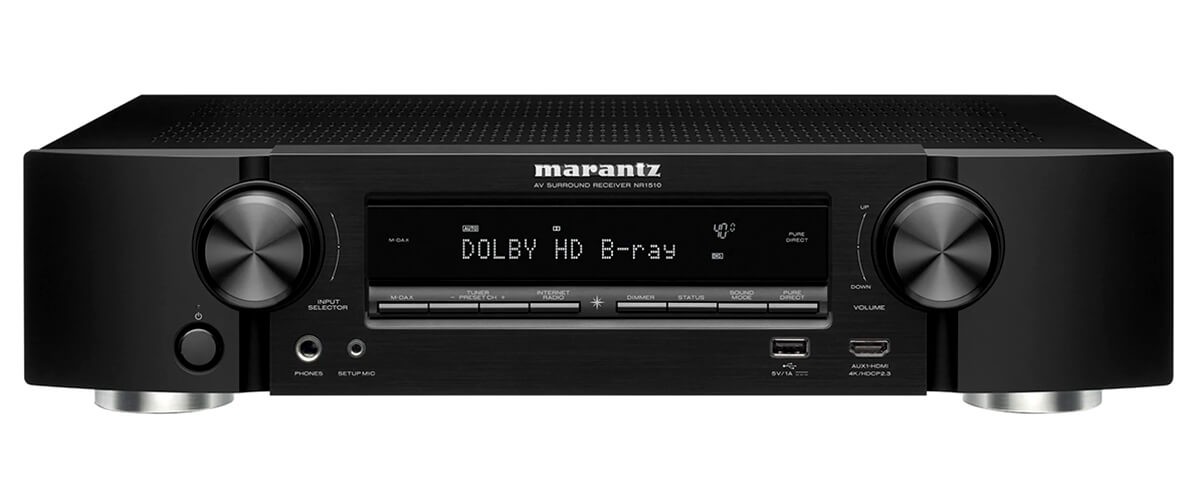
The Marantz NR1510 is a member of the brand’s entry-level lineup but the most expensive and functional receiver in my selection. Despite its price, the AVR is quite simple regarding supported formats. However, its options are more extensive than any on my list. It also offers a minimum wattage of 50 watts (8 ohms, 20Hz – 20kHz, 0.08% 2ch) compared to the competitors. So let’s get into its review without further ado and see why I put it in the best 5.2 AV receiver category.
The NR1510 has more HDMI inputs than the other receivers described. It has 6 inputs and one output that supports HDCP 2.3, eARC, 3D Signal Pass-Through, and 4K/60Hz (4:4:4) video transfer. And it works with HDR, HLG, and Dolby Vision video formats. Not a lot, of course. But I’m inclined to think that Marantz has made compromises to offer more connectivity and broadcast options.
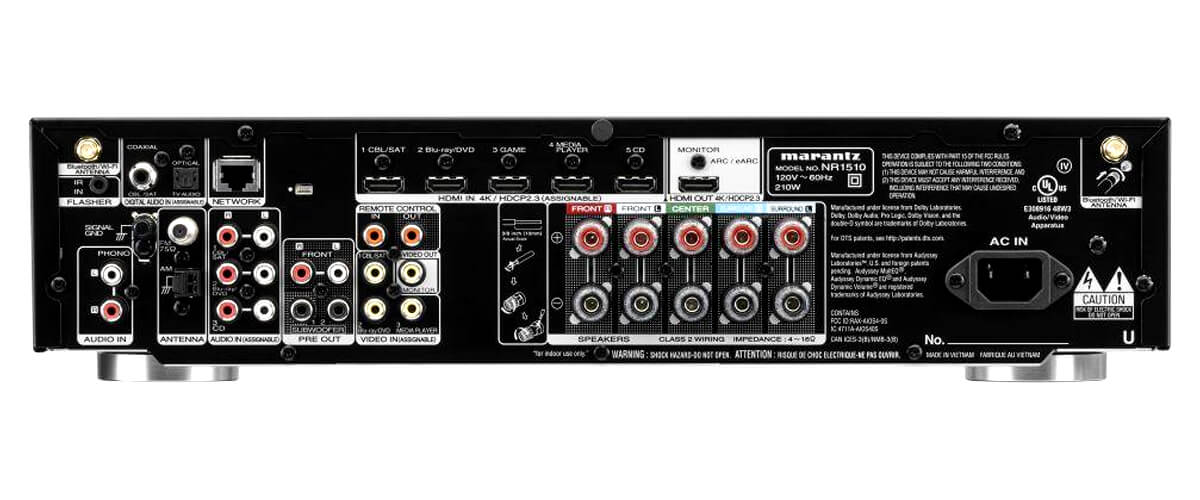
For example, it has many different connection ports for older equipment (composite inputs and outputs, optical and one coaxial digital input) and a phono input. And you can create an extensive home theater system using more equipment than with any other receiver in my review and many other models in this category. In addition, there’s a USB port, a headphone port, and one of the HDMI inputs is on the front panel, which is very convenient. The NR1510 also streams audio to Zone 2.
But in addition to wired, its wireless Wi-Fi connection with dual antennas, Bluetooth, and HEOS built-in will allow you to:
- stream music to multiple zones;
- use music streaming services (Spotify Connect, Deezer, TIDAL, Napster, Pandora, SiriusXM), and Roon Tested;
- use Alexa and Hey Google voice assistants;
- work with AirPlay 2 Audio Streaming;
- use Internet radio.
In other words, just about everything available in digital music today will be available. Isn’t it exciting?
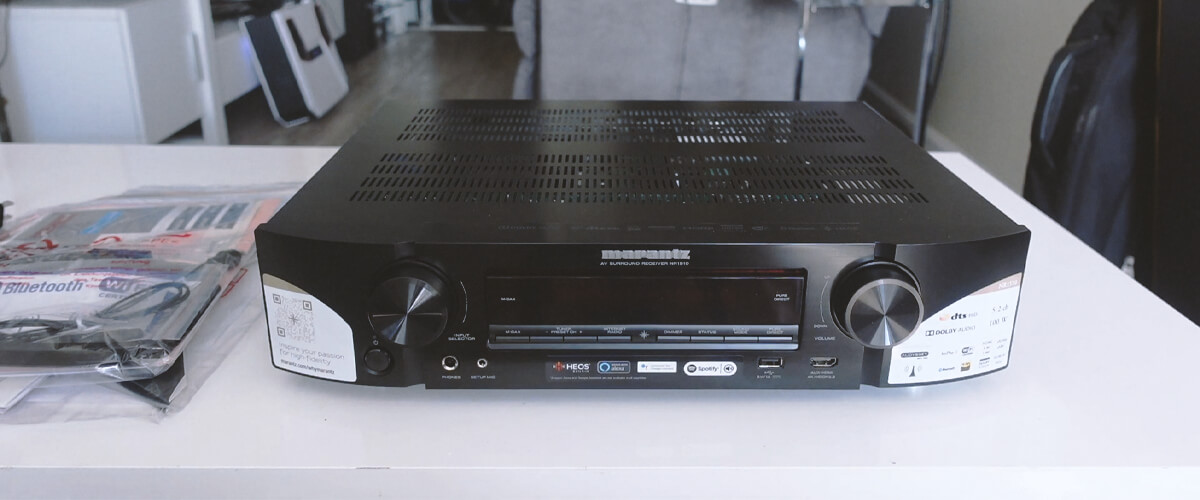
The Marantz NR1510 supports the latest Hi-Res audio formats. But regarding surround sound, support is limited to Dolby TrueHD and DTS-HD Master Audio. And yet, the quality of the brand is reflected even in those.
Watching Eternals was an interesting experience, as I was pleasantly surprised by the level of bass and clarity of the audio signal. The film has many scenes with dialogue and battles that blend equally clearly with the picture and merge into a coherent composition. I also decided to try out the AM record, Arctic Monkeys and was pleasantly surprised by the sound of the drums and bass, against which the vocals sounded quite realistic. Just fine for this category of AV receiver.
The Marantz NR1510 offers extended wired and wireless connectivity to create an extensive modern multimedia system. This model is the most versatile of all the devices in my review, but its audio and video performance is inferior to some receivers.
Key specs
- Channels: 5.2
- Power output: 50W/8 Ohm, 60W/6 Ohm.
- HDMI inputs/outputs: 6/1.
- Video functions: 4K/60Hz pass-through.
- Bluetooth/Wi-Fi: yes/yes.
- Streaming services: AirPlay 2, Spotify, TuneIn, Deezer, Tidal, Netflix, Amazon Prime.
- Supports: HDMI ARC, HDMI eARC, HDMI CEC, HDCP2.3, HDR10, Dolby Vision.
- Surround sound: DTS HD Master, Audyssey.
Pros
- Excellent digital and analog sound quality.
- Has an extensive wired connection range.
- Has more HDMI ports than other models.
- Supports Hi-Res music formats.
- Has wired and wireless zoning.
- Works with most streaming services and voice assistants.
Cons
- Small power of 50W.

